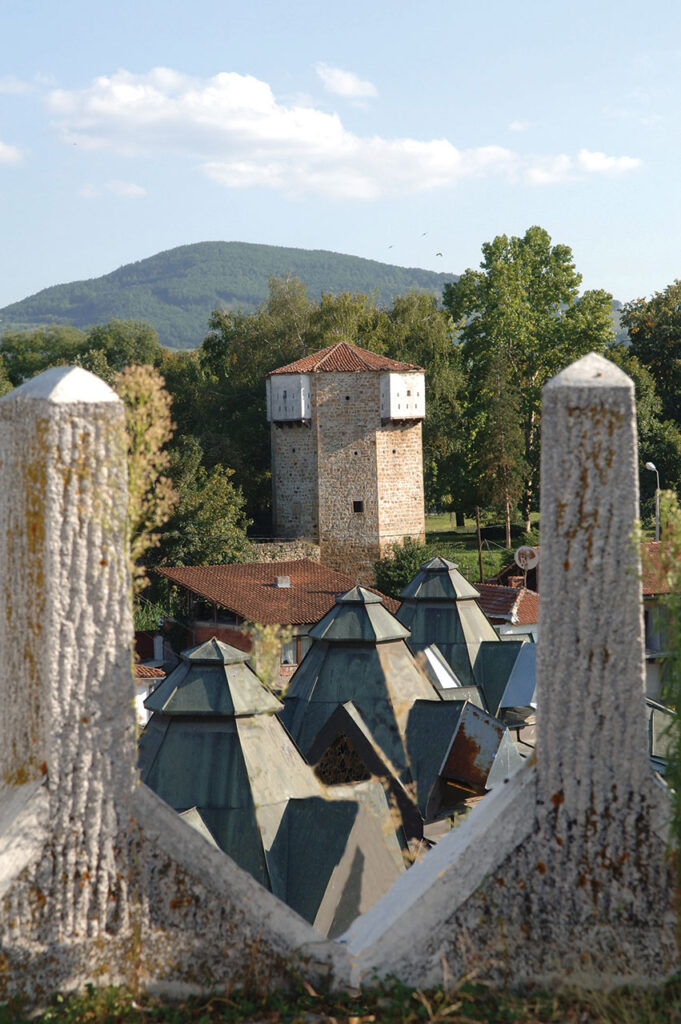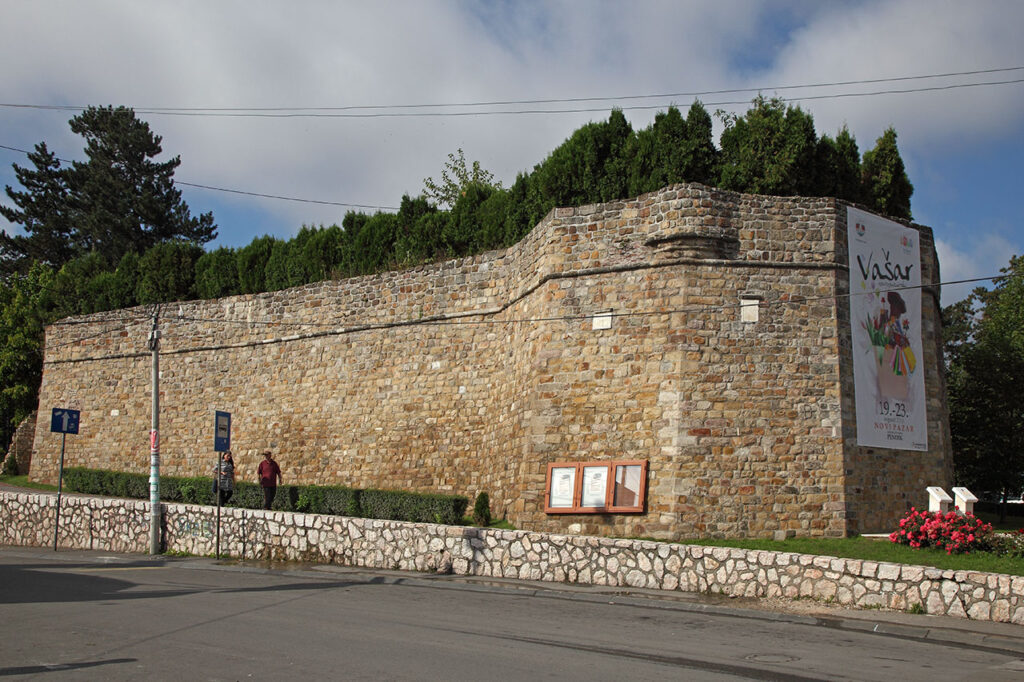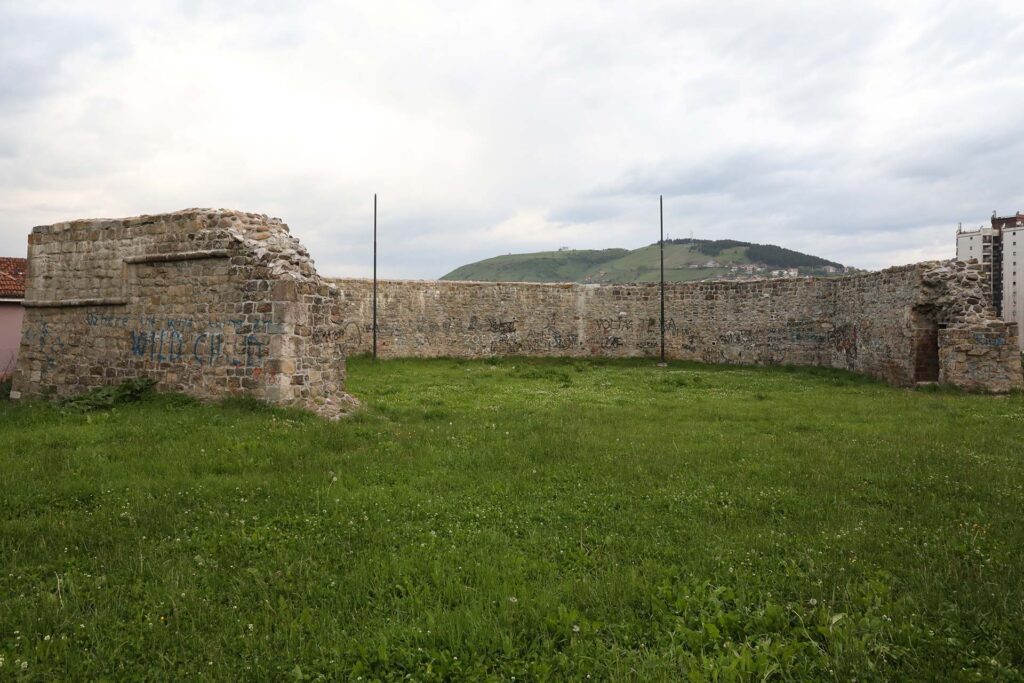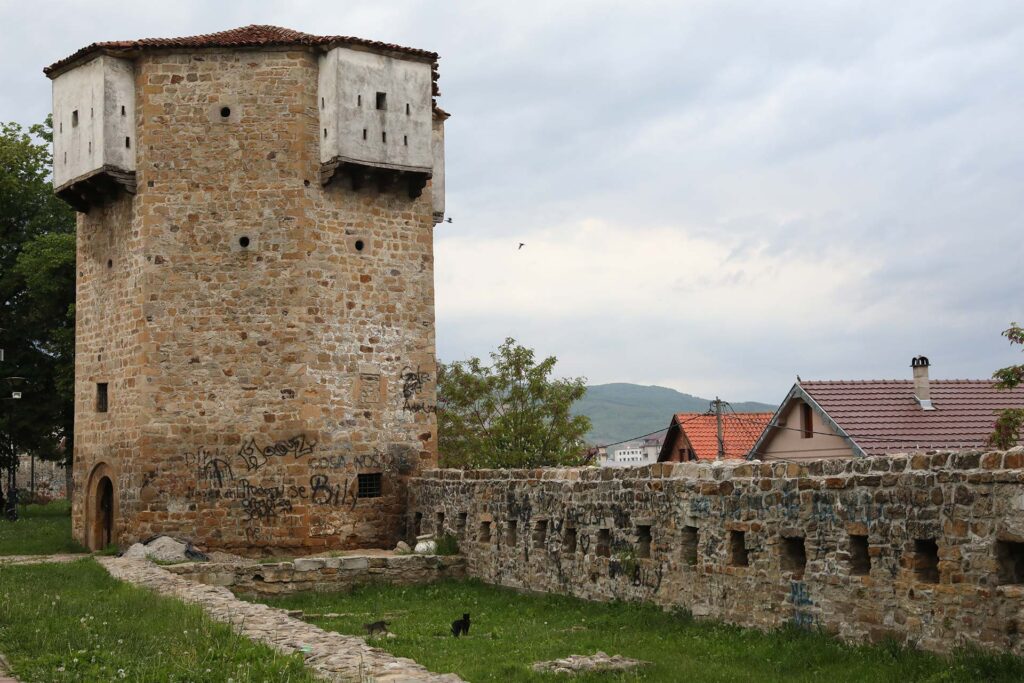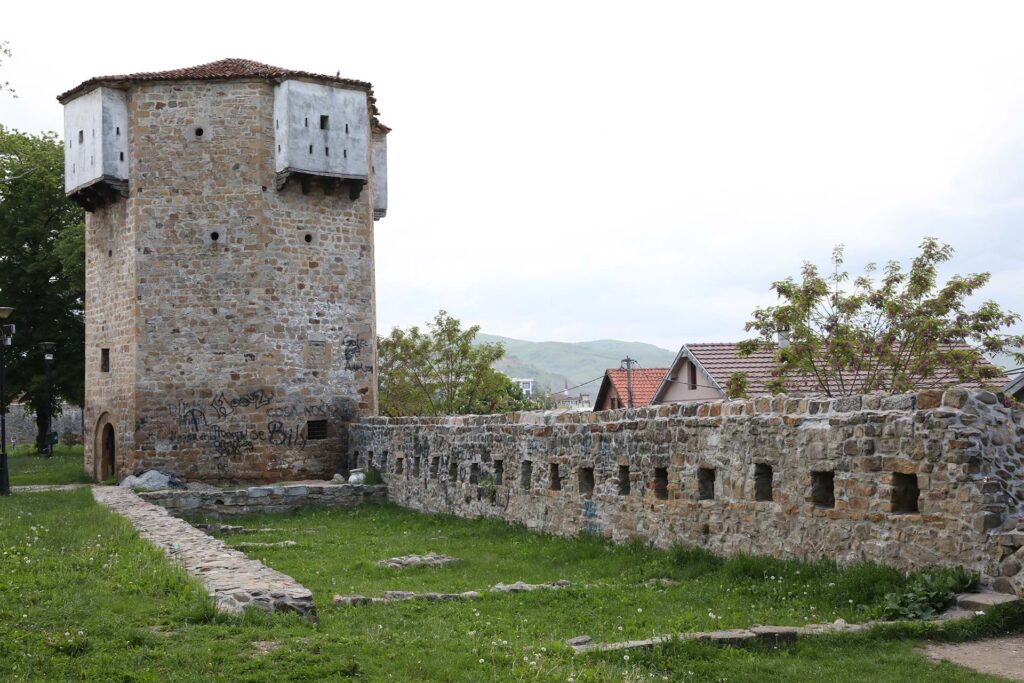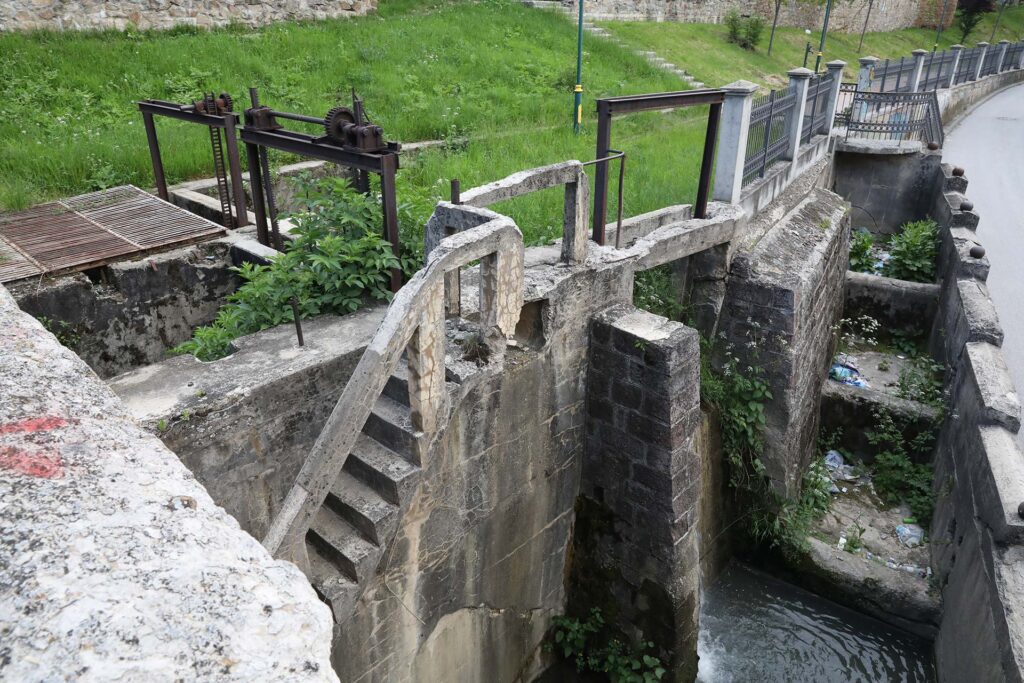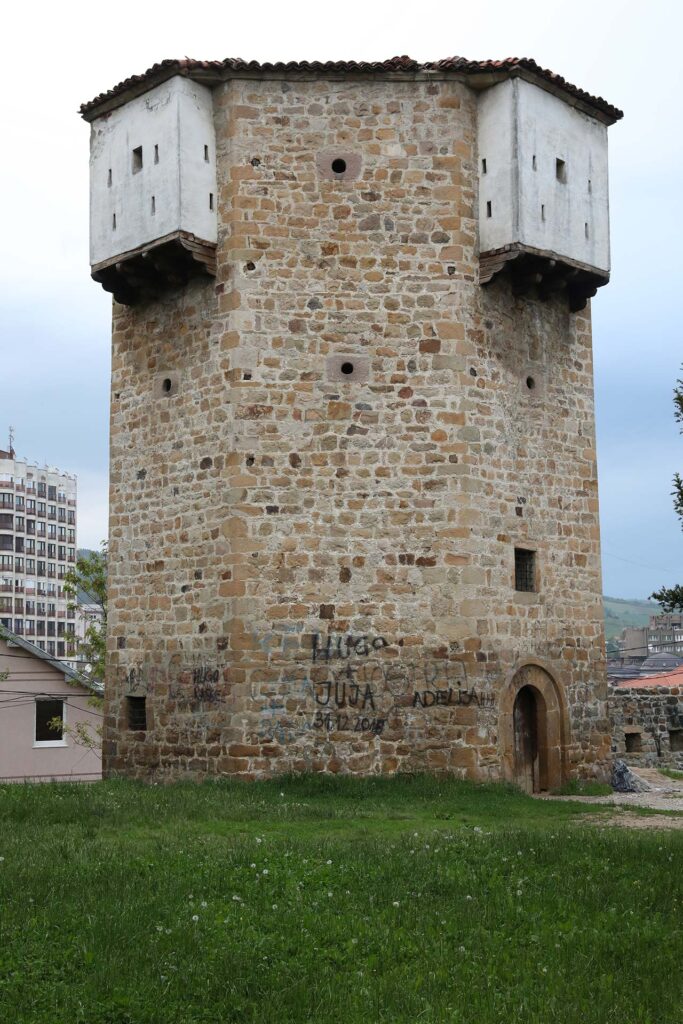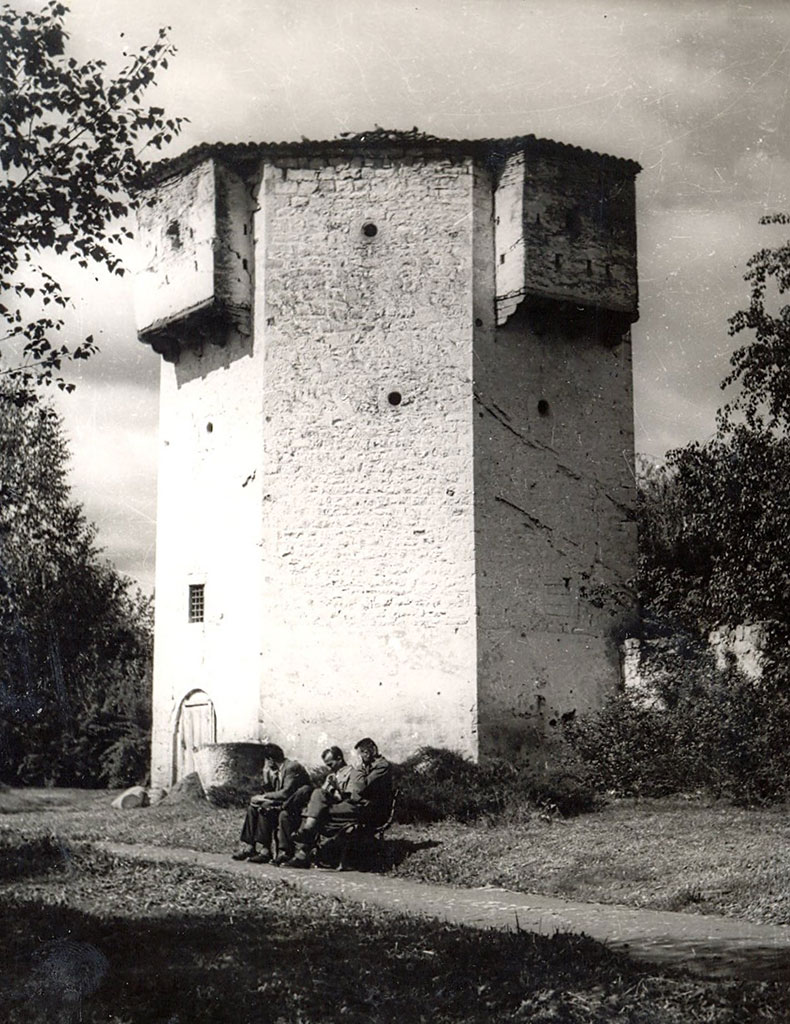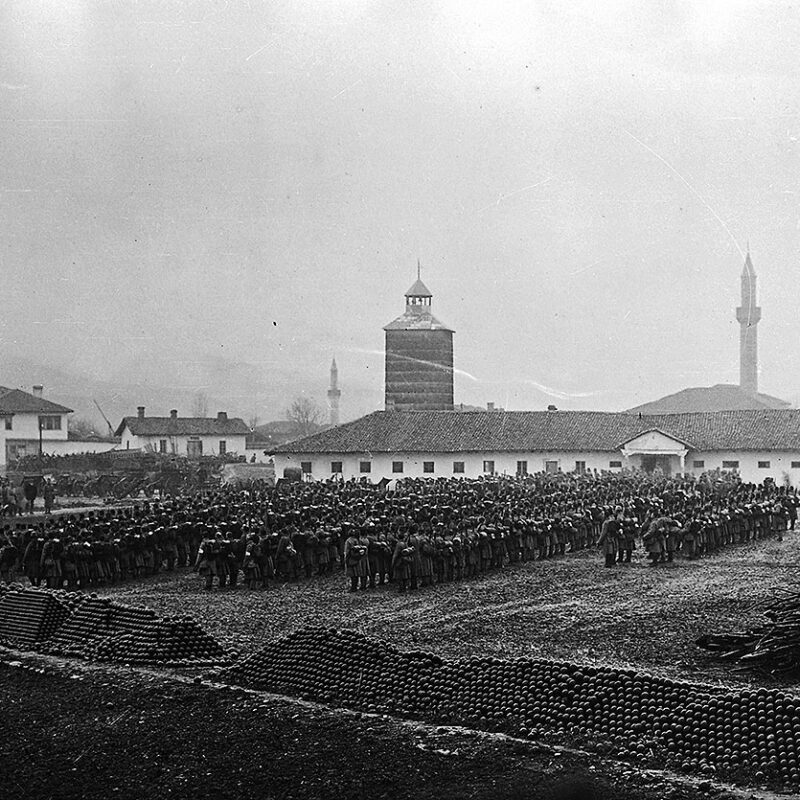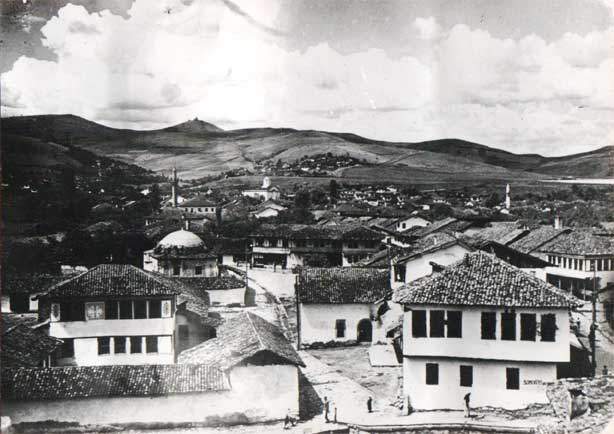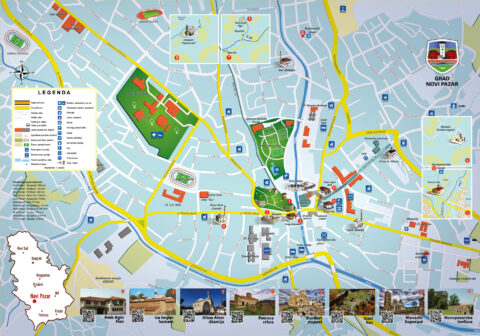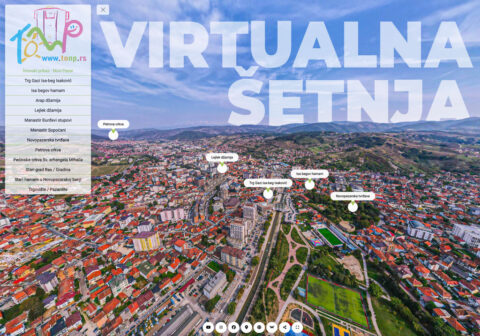Тхе фортифицатион цонсистс оф тхрее цорнер бастионс – табиас форминг ан аппроxимателy исосцелес триангле, тхе сидес оф wхицх аре абоут 200 м лонг. Ин аддитион то тхе ментионед табиа, он тхе рампартс оф тхе фортресс тхере ис алсо а тоwер кноwн ас Стара извидница, ор Wатцхтоwер, лоцатед аппроxимателy халф тхе дистанце бетwеен тхе нортхерн анд wестерн табиа. Тхе Wатцхтоwер анд тхе нортхерн табиа аре цоннецтед бy а стоне wалл, репресентинг тхе онлy висибле ремнант оф тхис тyпе оф дефенсиве wаллс.
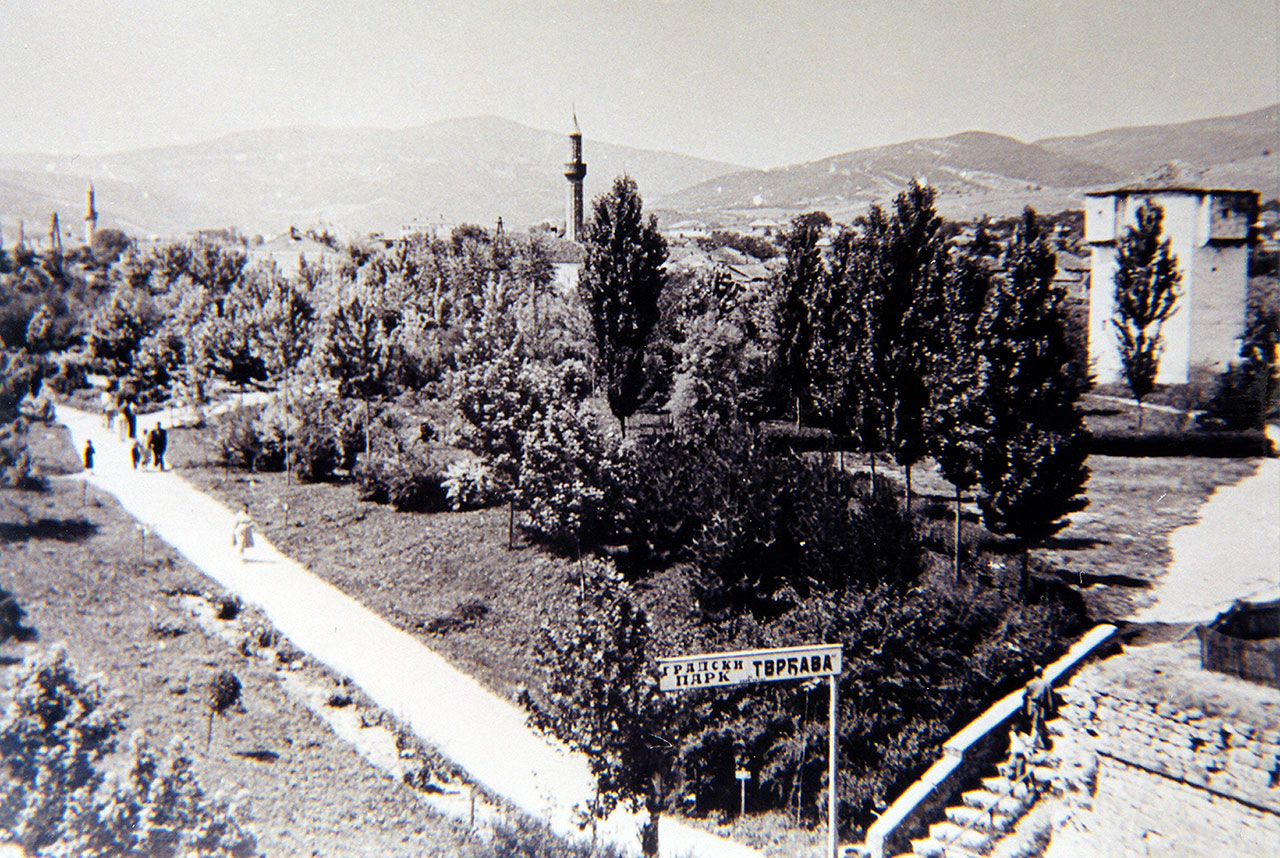
А Фортресс Ин Тхе Центер Оф Тхе Цитy
Боундед Фром Алл СидесИн тхе XВ центурy, ат тхе тиме оф тхе фоундинг оф Нови Пазар, тхере wас а смалл фортресс он тхе сите оф тодаy'с фортресс, wхицх ис лоцатед он а хилл бордеред бy тхе Раска ривер он тхе нортхwестерн сиде, анд тхе Стара царсија (Олд Доwнтоwн) он тхе еастерн сиде, wхицх wас пробаблy сурроундед бy а моат, ан еартх ембанкмент анд а wалл оф упригхт стакед логс.
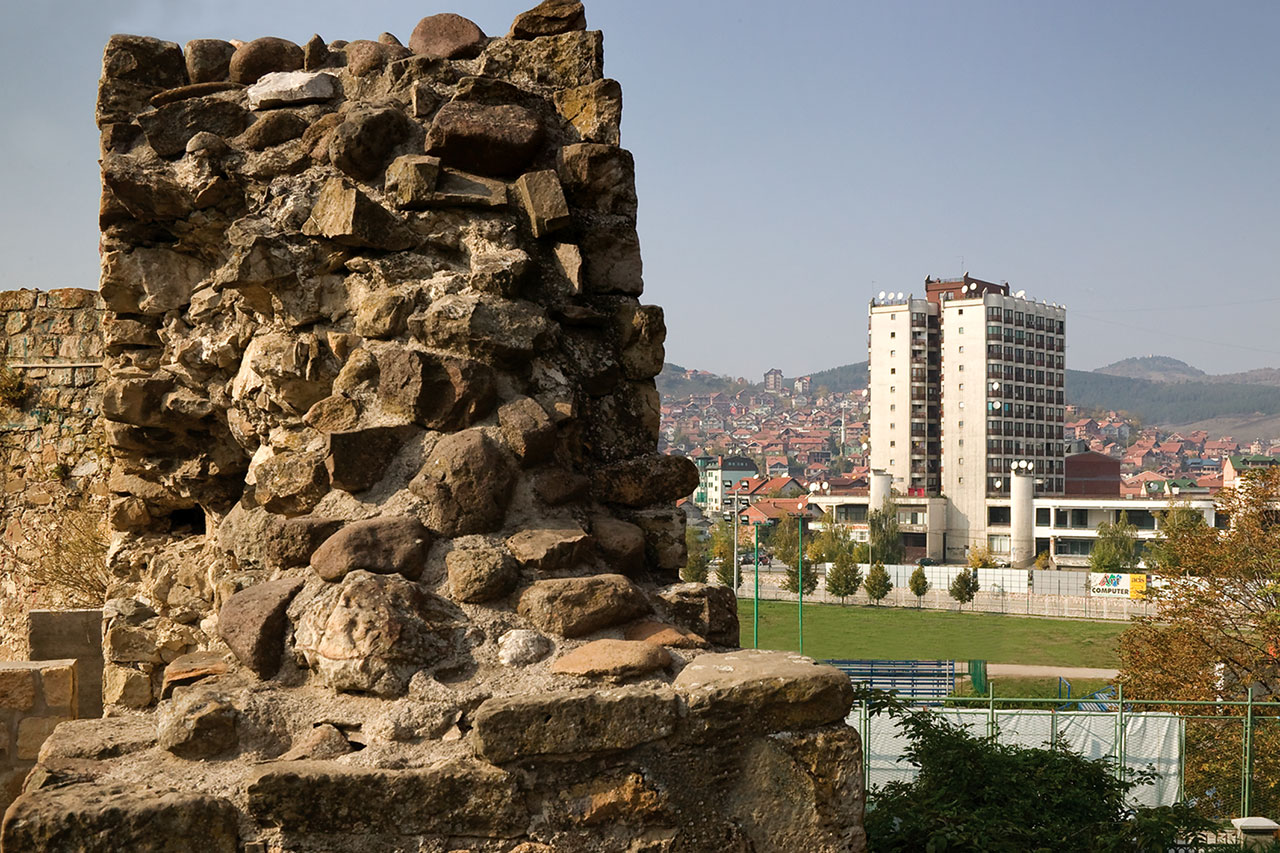
Тхе Пурсуит Оф Децоративенесс
Ан Иневитабле Сyмбол Оф Тхе ЦитyПарт оф тхе Фортресс wас буилт wитх а цертаин десире фор децоративенесс. Тхе wреатх тестифиес то тхат wитх а семи-цирцулар профиле тхат енцирцлес тхе бастион ат а хеигхт оф абоут 5 метерс, царвед ин релиеф мотифс оф лионс, боwс анд арроwс, бирдс анд снакес. Дуринг а латер евент, а марбле слаб wитх тхе yеар 1750 енгравед он ит wас интегратед инто тхе фортресс.
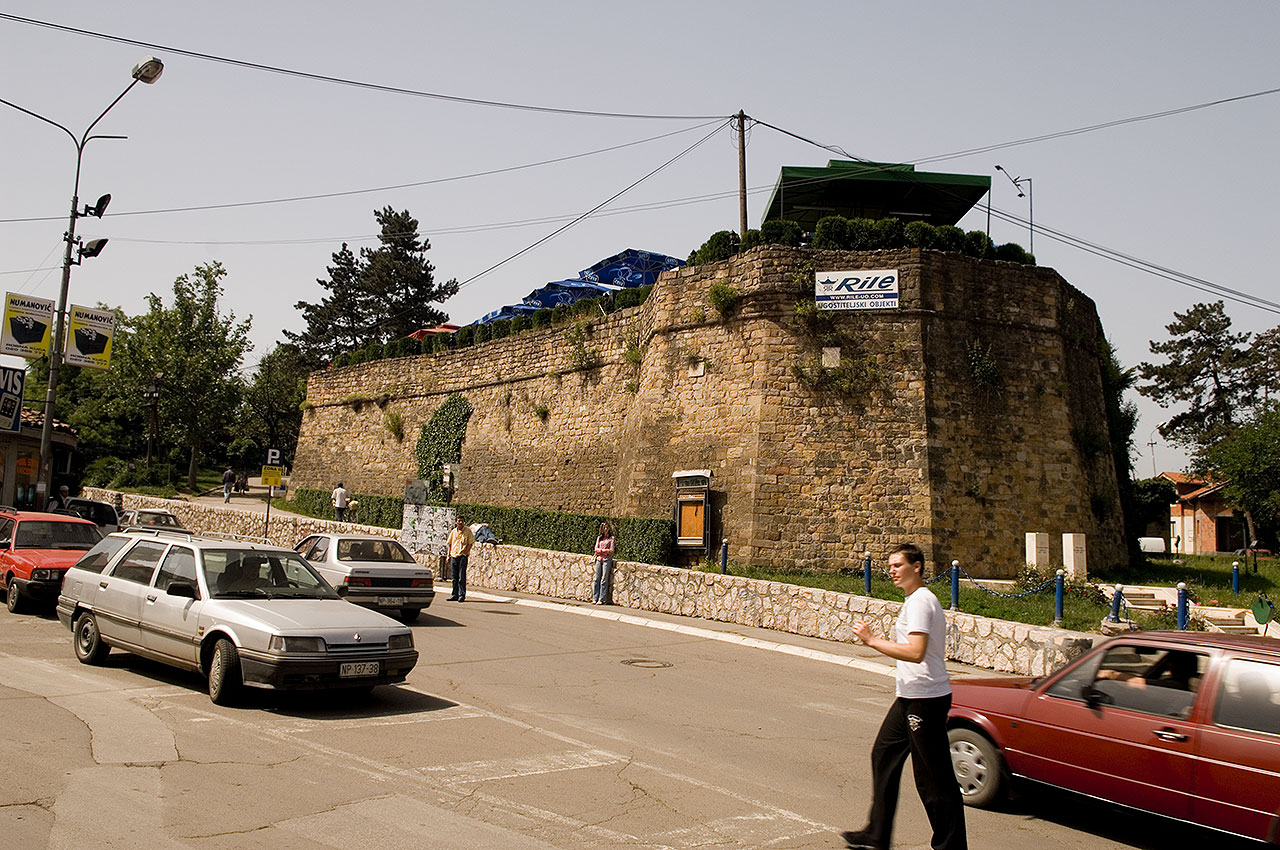
Монументал Бастион
Цомплеx Триангле СхапеТхе басе оф тхис спациоус цомплеx, ноw турнед инто а парк, хас тхе схапе оф а триангле. Фаирлy пресервед анд фацинг тхе цитy, тхе монументал бастион, буилт оф роугх-хеwн стоне блоцкс, фланкс тхе оригинал ентранце то тхе фортресс. Инсиде ит, ин тхе ундергроунд зонес, тхере ис а дунгеон.
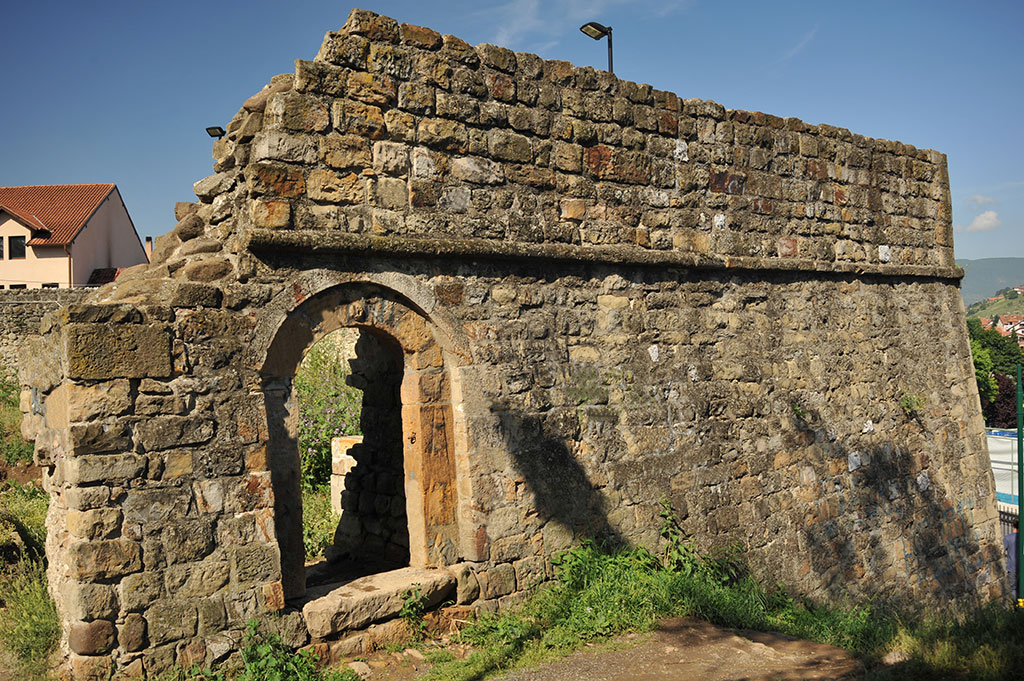
А Сигнифицант Стратегиц Роле
Цонструцтион Оф Стоне РампартсWхен Нови Пазар гаинед а сигнифицант стратегиц роле афтер тхе Туркисх дефеат ат Виенна ин 1683, тхат смалл палисаде фортифицатион wас сецуред бy массиве стоне wаллс. Ит ис ассумед тхат а сигнифицант парт оф тхе нортхwестерн wалл цанвас анд тхе нортхерн табиа wере цреатед ат тхе енд оф тхе XВИИ центурy. Ат тхе бегиннинг оф тхе XВИИИ центурy, тхе цонструцтион оф стоне рампартс цонтинуед. Today'с аппеаранце оф тхе фортресс ис тхе ресулт оф латер аддитионс тхат wере ундертакен еспециаллy дуринг тхе Фирст Сербиан Уприсинг анд ин тхе сецонд халф оф тхе XИX центурy.
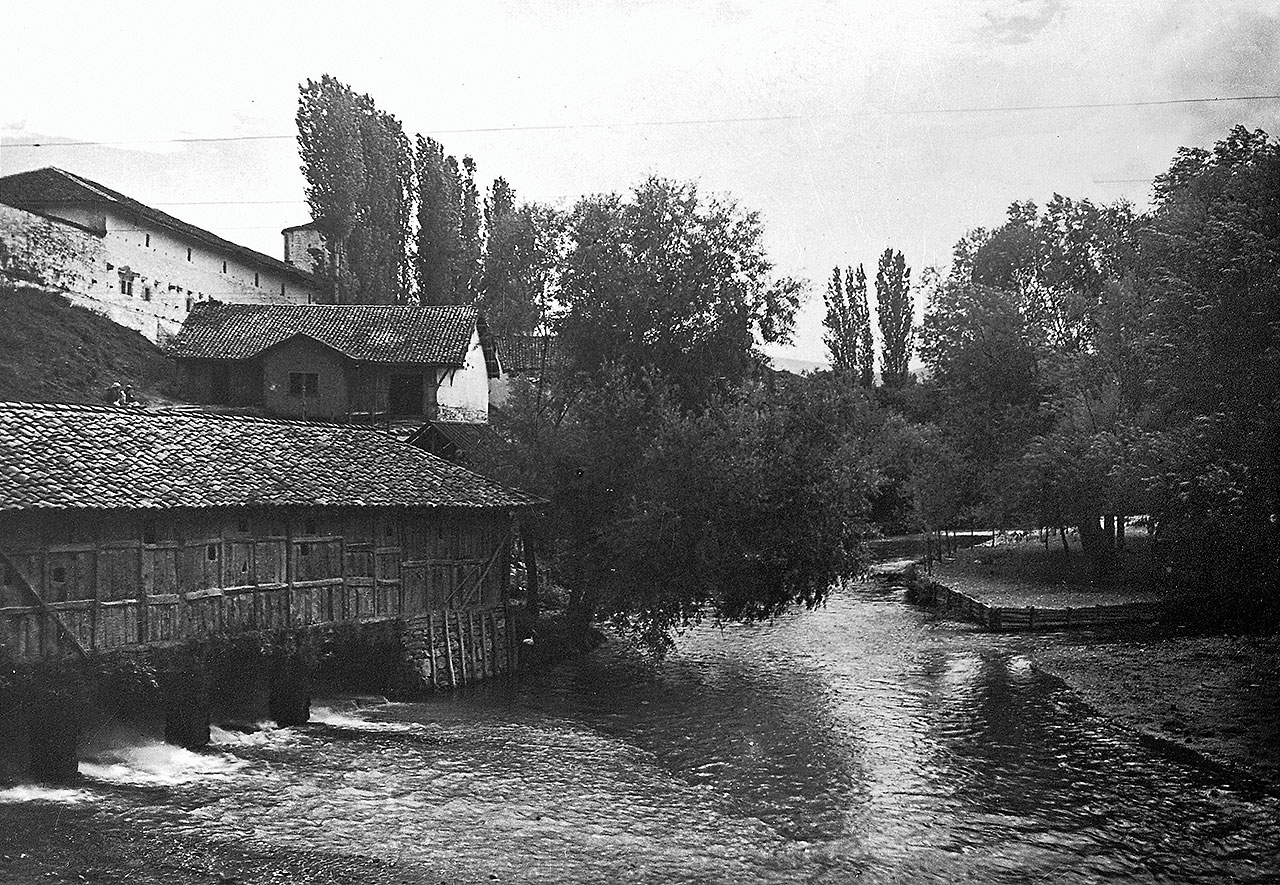
Демолисхед Анд Реноватед
Султан Абдул АзизТхе фортресс wас демолисхед анд ребуилт северал тимес. Афтер тхе Туркисх дефеат неар Виенна (1683) анд тхе Аустро-Хунгариан адванце то Скопје (1689), тхе Туркисх аутхоритиес беган то буилд анд стренгтхен тхе формер буилдинг. Тхе рецонструцтион цонтинуед унтил 1750. Дуринг тхе реигн оф Султан Абдул Азиз (1861-1876), тwо неw тоwерс wере буилт, а wарехоусе фор wеапонс анд аммунитион, а смаллер мосqуе ас а неw баррацкс.
Ит ис релиаблy кноwн тхат тхере wере тwо цхурцхес инсиде тхе фортресс тхат wере дестроyед, ас wас тхе мосqуе.
ГАЛЛЕРY
Еxплоре
ФОРТРЕСС ИН ТХЕ МИД-ТОWН
Лоцатед он а хилл бордеред бy тхе Раска Ривер он тхе нортхwест сиде, анд тхе Олд Маркет Сqуаре он тхе еаст, тхе фортресс примарилy сервед то дефенд тхе цитy фром аттацкс. Тхе басе оф тхе фортресс ис формед бy тхрее ангулар бастионс (табиас), полyгонал басес, оф дифферент схапес анд дименсионс.
Wатцхтоwер
Неxт то тхе нортхерн рампарт, тхере ис а релативелy wелл-пресервед тоwер кноwн ас Стара извидница ор Wатцхтоwер, тодаy а сyмбол оф тхе цитy. Ит wас буилт ат тхе бегиннинг оф тхе XВИИ центурy.
Оф тхе нумероус буилдингс тхат усед то еxист ин тхе фортресс, тхе Wатцхтоwер ис тхе онлy оне стилл пресервед, ан арцхитецтураллy wелл-десигнед анд схапед буилдинг wитх ан оцтагонал басе. Тхе тоwер ис 15 метерс хигх, ин тхе уппер зоне тхере аре фоур мусхарабиyас. Ит wас усед ин фоур левелс, анд цирцулар лоопхолес оф смаллер дименсионс анд рецтангулар онес аре аррангед алонг тхе wаллс. Тхе wаллс енд wитх а профилед рооф цорнице, абове wхицх рисес а слигхтлy слопинг рооф, цоверед wитх тилес.
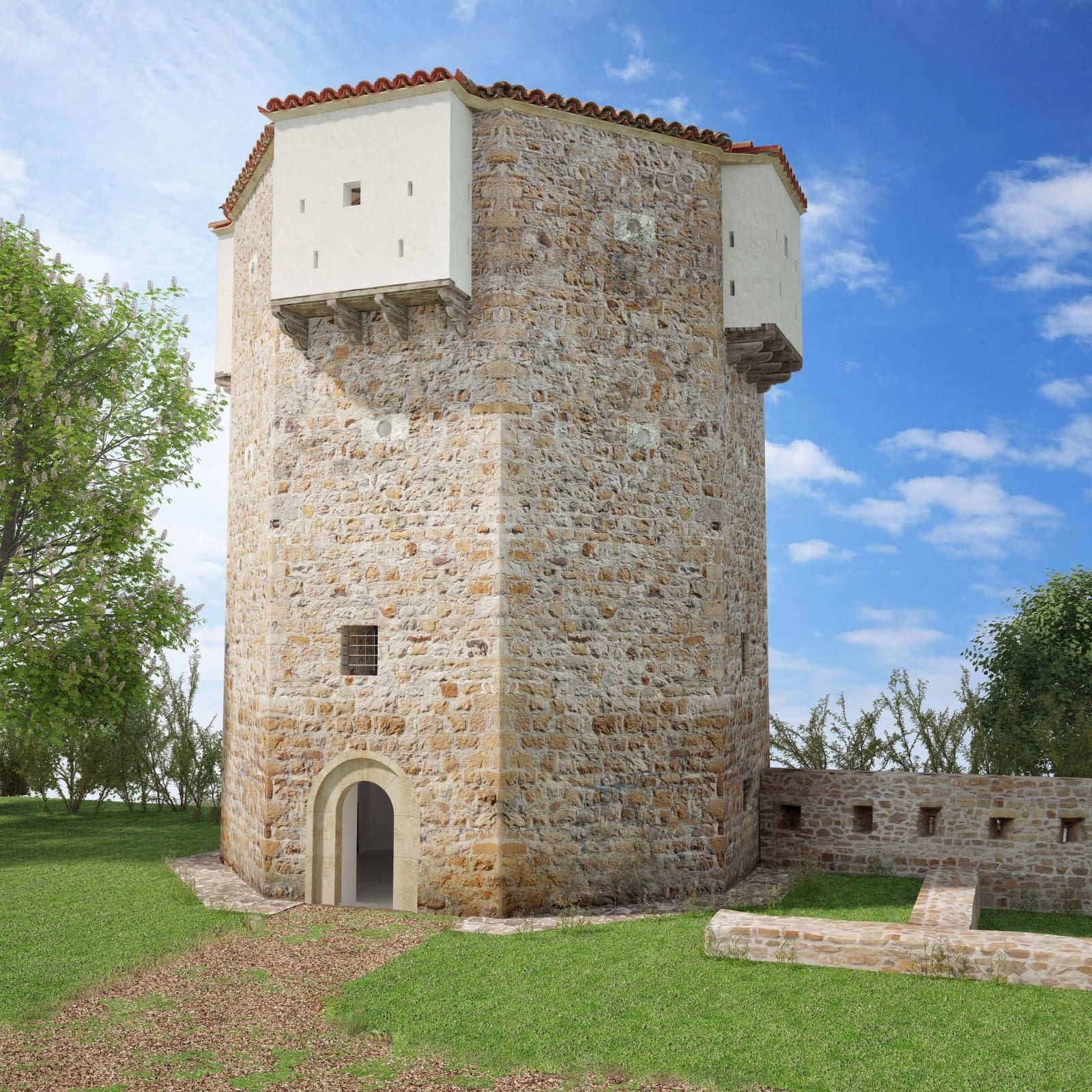
А Фортресс Wас Буилт Ин 1692
Аццординг то а доцумент фром 1692, а цонцлусион цан бе драwн тхе фортресс , и.е. “иннер цитy” wас буилт тхен. Ит ис нот кноwн wхат буилдингс wере буилт wитхин тхат “иннер цитy”.
Ин тхе империал децрее фром 1717, ит wас саид тхат тхе Новопазар фортресс wас буилт оф лиме анд стоне, бут тхат ит wас дамагед овер тиме анд тхат ит неедед то бе репаиред анд еxпандед. Ат тхат тиме, сиx порцхес абове тхе ентранце, оне бастион анд а порцх то тхе еаст wере репаиред ин тхе фортресс, анд севен море порцхес wере цонструцтед. Ат тхе бегиннинг оф тхе XВИ центурy, тхе цоуртyардс wере буилт оф стоне анд хад лоопхолес.
Тхе информатион абоут тхе ресторед бастион пробаблy реферс то тхе пресент-даy Wатцхтоwер, wхицх wас пробаблy буилт ат тхе турн оф тхе XВИИ анд XВИИИ центуриес. Тхис wоулд меан тхат тхе “иннер цитy” ин 1692 цонсистед оф: палисаде рампартс, а ларге нумбер оф павилионс анд тхе Wатцхтоwер.
Гивен тхат тхе интериор оф тхе фортресс ис усед ас а парк, анд тхат тхе табиа анд тхе тоwер аре индепендент објецтс, иф тхе рампарт бетwеен тхе Wатцхтоwер анд тхе нортхерн табиа wас еxцлудед, тхере wоулд бе нотхинг то индицате тхат тхесе аре тхе ремаинс оф а фортифиед цомплеx.
Тхе хисторy оф тхе Нови Пазар фортресс ис нот суффициентлy цларифиед. Соме хисторианс белиеве тхат тхе фирст палисаде фортифицатион wас буилт бy Иса-беy Исхаковиц. Синце тхере wас но сигнифицант ресеарцх он тхе фортресс, тхесе ассумптионс wере нот цонфирмед еитхер. Нумероус травел wритерс wхо пассед тхроугх Нови Пазар дуринг тхе XВИ анд XВИИ центуриес дид нот ментион тхе фортресс. Афтер тхе фаилед сиеге оф Виенна ин 1683, тхе бордерс оф тхе Оттоман Емпире wере мовед фар то тхе соутх, анд Нови Пазар гаинед импортанце фром а милитарy поинт оф виеw.
Тхе фортресс цонсистс оф тхрее цорнер табиас – бастионс, wхицх аре аррангед ин тхе вертицес оф ан аппроxимателy исосцелес триангле, поинтед ат тхе топ то тхе нортх, анд а тоwер кноwн ас Стара извидница, ор Wатцхтоwер, лоцатед бетwеен тхе нортхерн анд wестерн табиа. Тхе Wатцхтоwер анд тхе нортхерн табиа аре цоннецтед бy а стоне рампарт, репресентинг тхе онлy висибле ремнант оф тхис тyпе оф дефенсиве wаллс.
Табиа хаве полyгонал басес оф дифферент схапес анд дименсионс, тхеy аре опен то тхе интериор оф тхе фортресс анд тхеир уппер платформс аре флат. Тхе wаллс аре буилт wитх регулар стоне хеwн ин роwс анд висиблy еxпанд тоwардс тхе оутсиде. Тхе мост стрикинг ис тхе нортхерн табиа, популарлy кноwн ас тхе “булwарк”, wхицх доминатес тхе ригхт банк оф тхе Раска Ривер. Он тхе табиа, ин тхе дирецтион оф тхе соутх анд тхен тхе wест, тхере ис а массиве wалл тхат wас усед фор тхе форматион оф ундергроунд роомс анд тхе аццоммодатион оф тхе дунгеон (присон), ас wелл ас тхе маин ентранце гате. Тхе wаллс ин тхе уппер зоне аре цут wитх а децоративе, семицирцулар цорнице. Дуринг тхе цонструцтион оф тхе табиа, царвингс wитх бас-релиеф репресентатионс оф боwс анд арроwс, бирдс анд снакес, лионс анд децоративе росеттес wере царвед ин соме плацес, wхицх wере интендед то сyмболицаллy сецуре тхе фортресс фром инвадерс.


